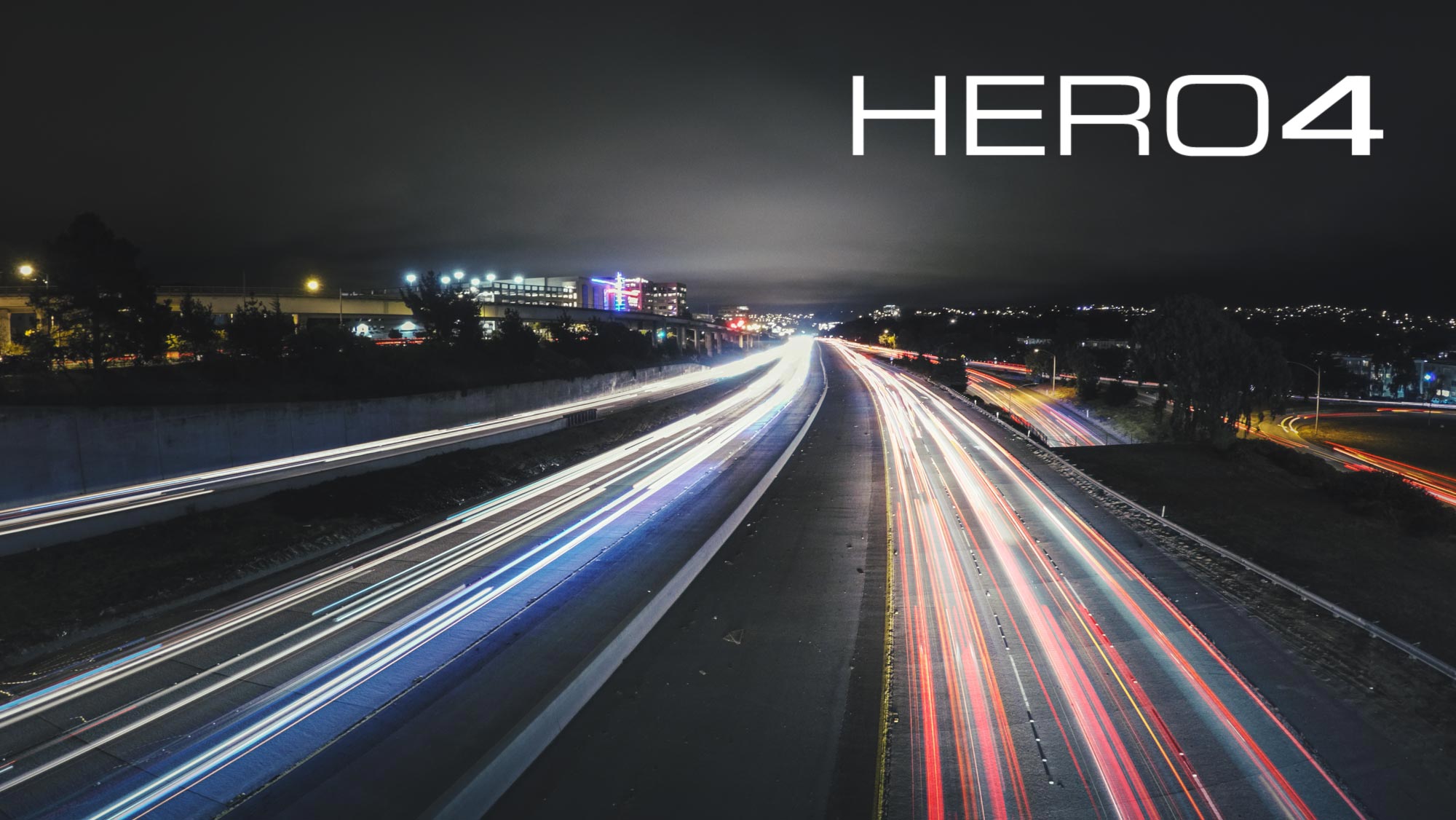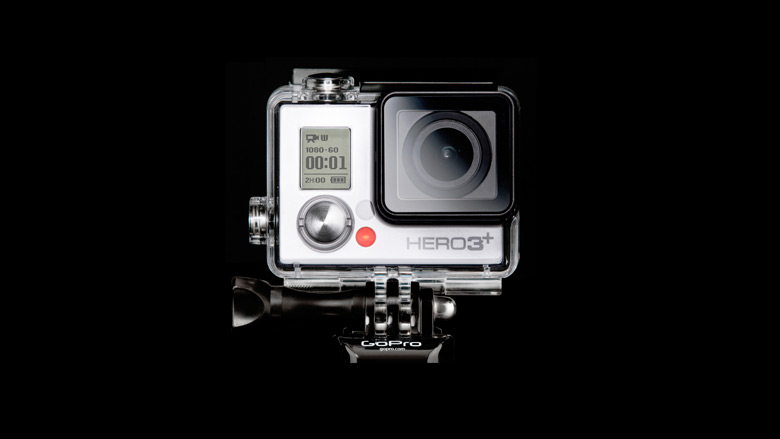HERO4 Series
New Features of the HERO4
Understanding Video in the HERO4
Understanding Photos in the HERO4
The HERO4 Black takes the already high quality modes you’re used to in the HERO3+ and builds upon those with higher quality video and a whole new set of resolutions and frame-rates. If you are new to GoPro, I recommend a quick read through ‘Understanding your GoPro’ to get to know how the GoPro does its processing, fields of views, and other image attributes I mention below. Also, if you haven’t already checked out the post ‘New Features of the HERO3+’, I recommend glancing through that. Everything introduced in the HERO3+ holds true for the HERO4 including the lens properties, new software additions, color profiles, etc.
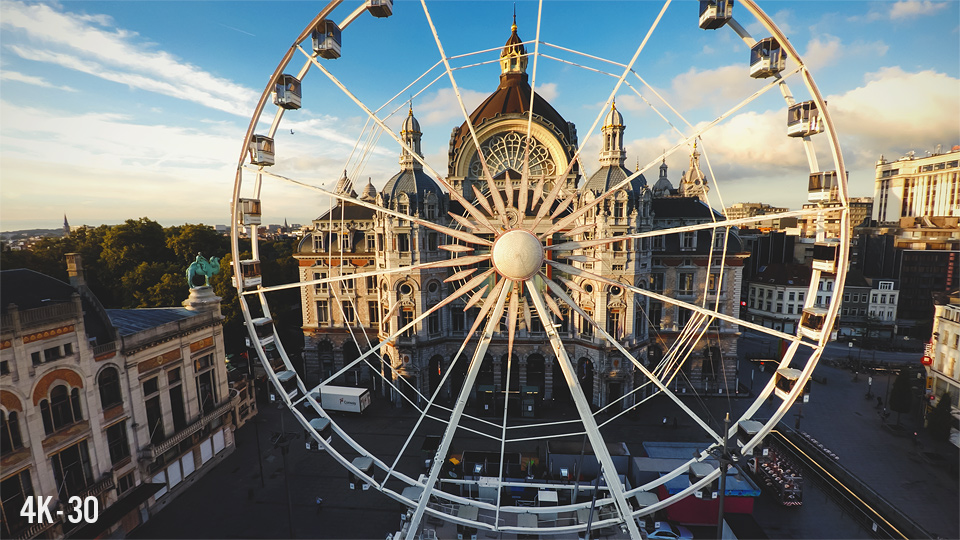
4K-30 Colored Frame Grab from DJI Phantom 2 – ProTune, GoPro Color, ISO 400, Sharpening Low, EV Comp 0
ProTune for Video in the HERO4
ProTune is a setting in the HERO4 that, if enabled, will force high bit-rate for all video modes (up to 60 Mbit/s) as well as activates a few adjustable video settings – White Balance, Color Tuning, ISO Limit, Sharpening, and Exposure Compensation. Prior to the HERO3+ v2.0 firmware update, this setting was only recommended for professionals due to the flat color style; however, I now recommend everyone to be using ProTune due to new changes we’ve pushed through. At the most basic level, if you enable ProTune and don’t touch the settings, your video footage will look exactly the same as it did without ProTune, but higher quality (higher bit-rate). We can dive a bit deeper and learn about the effects of the different settings, and how they can be used to increase the quality of your footage.
White Balance
White balance basically determines the color temperature of your footage (cool to warm). By default this is set to Auto which generally does a good job in all conditions. To lock off the color temperature, you can set this to the different Kelvin values between 3000K & 6500K. 3000K will cast your footage blue relative to neutral, while 6500K is quite warm/yellow compared to neutral. Lastly is a setting called ‘Native’ which won’t apply any WB correction matrix (formerly called ‘Cam-Raw’). If you’re going to change this setting, using the app or a screen helps quite a bit.
Color Tuning
Color tuning is the overall color, contrast, and saturation settings of your video. There are two options – GoPro Color, and Flat. GoPro color is the standard color tuning that you’ll get out of the box – higher saturation, contrast, and accurate colors. Previous versions of GoPro ProTune defaulted to Flat which is a more neutral color profile. Flat should only be used if you’re an experienced color corrector or are trying to match GoPro footage to other video sources in post. If you’re worried about dynamic range, Flat comes in a stop below GoPro color to give a bit more latitude in the highlights. Flat will appear to have more grain in low light because it pulls up the shadows; however if you apply either a ProTune LUT or basic curve over the footage, it will drop the grain into the blacks.
ISO Limit
ISO Limit tells the camera how bright it should get in darker scenes by affecting the digital gain added to the video. By default it’s set to 6400. This means in a dark room it will use digital light gain to make it brighter and compensate for the darkness. The brightness comes at a price, which is noisy footage (grain, spots, etc). As you set the ISO limit lower, the footage will appear darker, but also cleaner with less noise. ISO limit won’t ever affect video footage during daylight or in bright situations because the camera won’t need to use the extra ISO boost. 400 is the darkest/cleanest looking footage, while 6400 is the brightest and noisiest footage. I personally keep this at 400 at all times since I don’t ever want grainy footage.
Sharpness
The Sharpness setting affects just that – the digital sharpness in the video. A GoPro lens is only sharp to a certain point. After that digital sharpness is added to make the footage appear sharper. By default it’s set to high, which will make your footage pop and appear sharp. This setting allows you to lower the digital sharpness if you like a smoother looking video, or plan to add sharpness in post. I prefer low sharpening at all times to get smooth, clean looking video.
Exposure Compensation
The last setting in ProTune is Exposure Compensation/Bias which lets you tell the camera whether to always be slightly lighter or darker than normal. By default it’s set to 0. If you set it to +2.0, the footage will appear to be 2 “stops” lighter in all situations. In photography if you go up by 1 “stop” you’re doubling the amount of light that gets let into the camera. If you set the exposure bias to +2.0 the footage will be 4 times brighter than normal. Similarly if you set it to -2.0 it will be 4 times darker than normal. Careful when adjusting this – there’s no indication on the UI once it’s set – be sure to check this value regularly if you are prone to changing it now and then. I keep this at 0 for most things. On occasion if it’s a varied scene with a mixture of bright highlights and dark shadows, dropping it to -0.5 can help save some highlights.
Abe’s Go-To ProTune Settings for Max Image Quality:
White Balance: Auto
Color Profile: GoPro (Flat if you prefer detailed manual grading)
ISO Limit: 400
Sharpening: Low
EV Compensation: 0 (-0.5 to save highlights)
Video Modes in the HERO4 Black
The following list is my personal review of each new mode that appears in the HERO4 Black – I mainly focus on image quality and utilize this information to maximize the overall visual quality of my videos. If you’re up for it, learning when and how to use each mode will guarantee a higher quality final output.
Explanation of Terms
POV: Cameras mounted to your head, chest, or other point of view of action.
Mounted: Similar to POV but usually refers to cameras mounted to physical objects (cars, skis, bikes, etc).
B-Roll: Any other camera mount (handheld, pole follow-cam, glide-cam, interview cameras)
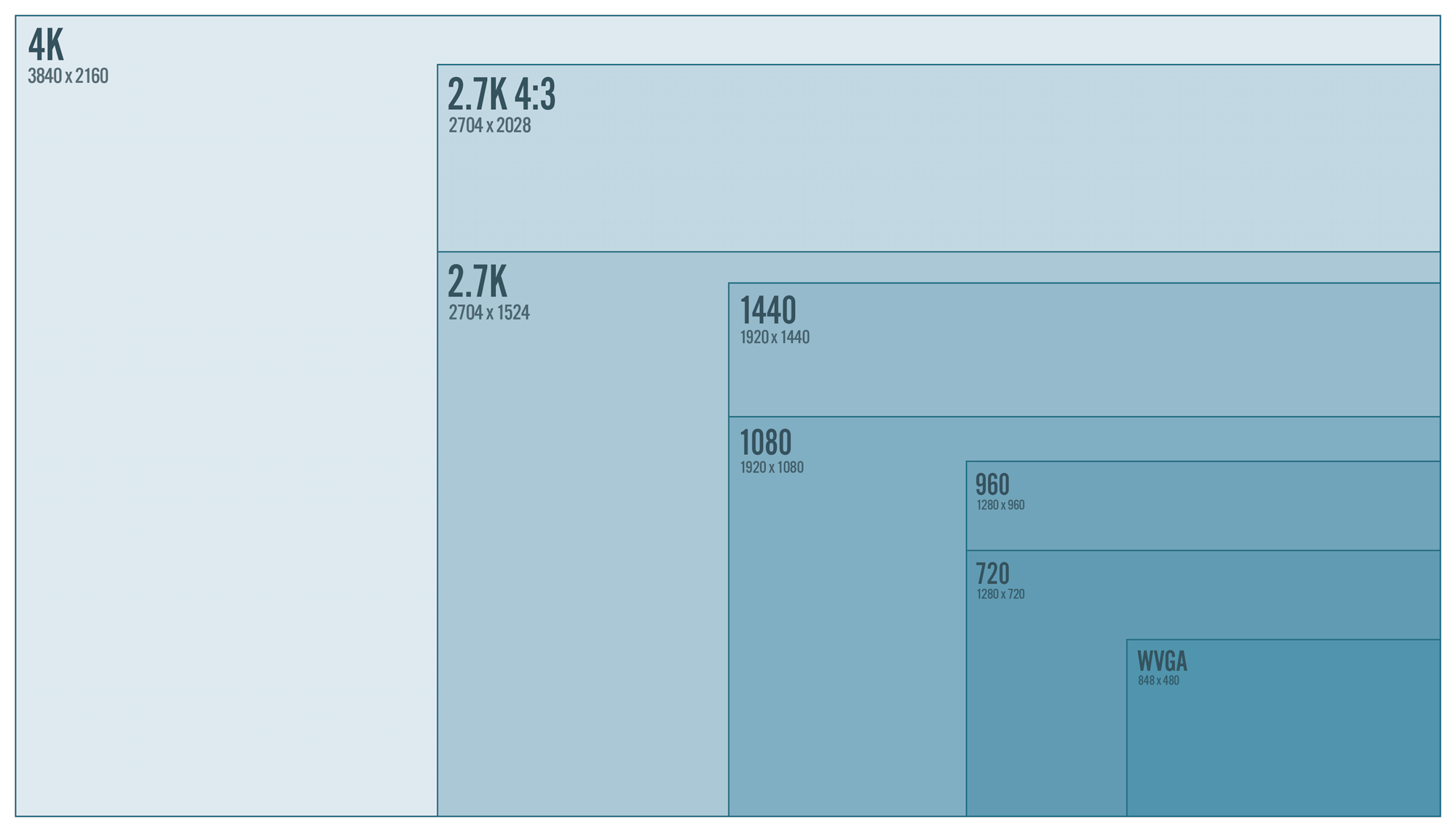
-
4K – 24 & 30 – Wide
This is a new standard of quality for the HERO4 and my favorite mode when I don’t need slow motion. In editing, even when scaled to 1080P, you instantly know when you’re looking at a 4K shot vs a 2.7K shot. The level of detail and clarity is stunning, especially with good outdoor light. At 60 MBit/s 4K is pretty much max-ing out the data flow, so when you film extremely high motion scenes you’ll start to see a bit of compression blocking. That being said, it still holds up well and looks great for most applications.
Uses:
Anything you don’t need slow motion! Quadcopters, B-Roll, interviews, etc. 16:9 frame has a less immersive feel for POV so a 4:3 mode is generally better for fast action POV. Use 24 FPS for slightly better low light performance. Look to higher frame rates for reduced rolling shutter on mounts with a lot of vibration. -
4K SuperView – 24
This takes advantage of the full frame of the sensor, pulling the images from the taller 4:3 aspect ratio and dynamically stretching them down to 16:9 4K. This gives you more view above and below what would be your normal 16:9 frame. It looks great but should generally only be used for POV/mounted shots; otherwise, the dynamic stretch may give undesirable distortion over your footage.
Uses:
This will be big for action sports films that want to take advantage of 4K and good immersive POV. -
2.7K – 60 – Wide & Medium
This looks almost identical to the 2.7K 30 we’re used to in the HERO3+ but at 60 FPS, so it’s a stunning mode to use. This is my new ‘everything’ standard for filming non-POV footage. I use this in place of 1080-60 in the HERO3+. Medium will naturally have a bit more grain in lower light as you’re cropping in on the sensor and are closer to actual pixel size without scaling.
Uses:
Mounted non-POV, auto, B-Roll, drones, pole-cam, diving, etc. 60 FPS will help with reducing rolling shutter on mounts with high vibration, compared to 30 FPS. -
2.7K 4:3 – 30
Similar to 1440P, this mode takes advantage of the full 4:3 aspect ratio of the sensor. It has the same width dimensions as 2.7K but is taller with a height of 2028 px (vs 1524 px of 2.7K). This mode can take the place of 1440-30 (my old favorite mode in the HERO3+). I use this anytime I want to capture the most real, immersive, and real-time POV (no slow motion). I utilize dynamic stretch techniques to pop it into a 16:9 frame when editing.
Uses:
Anything POV that doesn’t need slow motion. This is great for wearing on your chest or head to capture daily life, behind the scenes work, car driving, etc. Works well indoors & outdoors. -
2.7K Superview – 30
This mode takes the tall 4:3 frame captured in 2.7K 4:3 and dynamically stretches it down to a 2.7K 16:9 frame. If you want quick and immersive POV footage without dynamically stretching the footage yourself, this is a great mode to use.
Uses:
Anything POV that doesn’t need slow motion. Use this over 4K Superview when 24 FPS isn’t enough. This will work well in low light situations. -
1440 – 60
This is the 4:3 version of 1080, so it’s the same width as 1080P but taller at 1440 px vertically. The HERO3+ has this mode in 30 and 48 FPS. HERO4 Black adds 60 and 80 FPS to the list. 1440-60 takes the same quality we’ve had with 1440-48 in HERO3+, but brings it up to 60 FPS. It’s a welcomed addition; you can feel the increase in FPS when slowing the footage down to 50%. As with 1440-48 in the HERO3+, when looking at 100% you’ll see very slight jagged edges/aliasing compared against 1440-30. This is due to it being processed slightly differently to get the combination of high resolution and high frame rate. This is my go-to mode for all around great high action POV. I utilize the dynamic stretch techniques to properly put this into a 16×9 timeline.
Uses:
Anything POV that you may want to slow down in editing. -
1440 – 80
When you make the jump from 1440-60 to 80, there’s a slight change in quality. You’ll see a bit more aliasing on hard edges in 1440-80 when comparing to 1440-60 or 48. It’s the same quality you’ll see in 1080-120 Wide, so these two modes mix and match well. In editing you can slow this down to 37.5% of original speed and still retain 30 FPS.
Uses:
High action POV that you want to capture better slow motion. Generally you’ll want to stick to outdoors; avoid using this in lowlight or dark indoor areas. -
1080 – 90 & 120 – Wide
1080-90 and 1080-120 are identical in image quality and processing. When looking closely against 4K or 1080-60, you may notice aliased edges similar to that of 1440-80. It looks great on the web.
Uses:
Any high action moments you want to slow down a lot that require the full wide angle of the GoPro. If image quality is your highest priority, look to 2.7K-48 or 1080-60. 1080-90 will handle slightly better with lower light, but generally you’ll want to stick to good light outdoors with these modes. -
1080 – 120 – Narrow
This is an amazing new mode that looks very similar to 1080-60 Narrow in the HERO3+. It’s clean, gets rid of the wide angle, and shoots at 120 FPS in full HD. You can try quick moving shots or not worry about being as smooth with the camera since you can slow down the moments so much. This mode will appear noisier compared against 1080-60 wide when looking at 100% since it’s cropping so narrowly into the center of the sensor, and it’s not getting a ton of light while capturing at 120 FPS.
Uses:
Try this on a drone or pole cam for interesting slow motion shots. It will add something extra and different to your videos! Remember to have plenty of light since the frame rate is so high. -
1080 Superview – 60
HERO3+ has this mode as well; however, the quality has been upgraded slightly in the HERO4. This mode is very clean and a great setting to use for anything POV (if you don’t want to deal with 4:3 aspect ratios of 1440.)
Uses:
Anything/Everything POV – beautiful image quality. Use this over 1080 Superview – 80 if you’re looking for the best image quality. -
1080 Superview – 80
Similar to 1440, when you make the jump from 60 FPS to 80 you’ll see slightly more aliasing in the image. When comparing against 1440-80 or 1080-90 at 100% this mode will have a bit better quality since it’s scaling down from a larger 1440 frame.
Uses:
High action POV – use this over 60 FPS if you’re looking for better slow motion. -
960 – 120
960 – 100 is in the HERO3+ and GoPro has taken the same mode and added 20 more FPS. This is still the go-to mode if you want the best slow motion for your high action POV moments. This is also one of the best modes to use for Instagram video – the 4:3 aspect ratio is closer to a square and it has great slow motion. For normal 16:9 video sharing, if you utilize the dynamic stretch tricks in post, the quality generally holds up well against higher resolutions.
Uses:
Highest/fast action POV that you want to slow down. Surf barrels, skate trick POV, cliff diving, etc. -
720 Superview – 120
720 Superview 120 is a great, clean mode to get the best slow motion for your high action POV moments. It’s similar to 960-120; however, this mode simply dynamically stretches the 4:3 video into a 16:9 frame for you. Clarity-wise, it will be tough to hold up well next to 4K; however, used in the right way, and sparingly, could work well in a high quality video online.
Uses:
Highest/fast action POV that you want to slow down. Surf barrels, skate trick POV, cliff diving, etc.
Abe’s Go-To Modes for Maximum Image Quality:
Non-POV without Slow Motion: 4K-30
Non-POV with Slow Motion: 2.7K – 60 Wide & Medium, 1080-120 Narrow
POV without Slow Motion: 2.7K 4:3 – 30 or 2.7K Superview 30, 4K Superview 24
POV with Slow Motion: 1440-60 or 1080 Superview 60, 960-120 or 720 Superview 120
Read my reviews of the modes for the HERO4 Silver/HERO3 & HERO3+ Black Edition – Understanding your GoPro
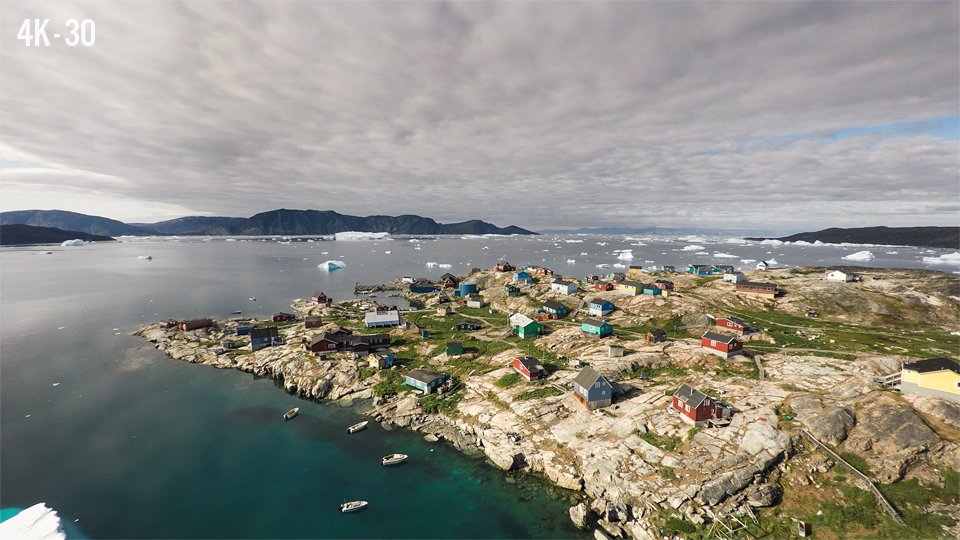
4K-30 Colored Frame Grab from DJI Phantom 2 – ProTune, GoPro Color, ISO 400, Sharpening Low, EV Comp 0
Spot Meter & Auto Lowlight
There’s two more video settings that can affect the overall look of your video – Spot Meter and Auto Lowlight. These are both located outside of ProTune. Spot meter is accessible for all video modes, while auto lowlight is only accessible in modes above 30 FPS.
Spot Meter
Spot meter changes the way the camera auto exposes for light in a scene. If active, the camera will look to the center of the frame to adjust for light rather than look at a scene as a whole. This is handy when you’re mounting the camera in a car looking forward and you’d like to see the road, not inside the car. Normally the camera will adjust for the darkness of the car and the road will be pretty bright. With spot meter on it will make the inside of the car dark and adjust the light for the road more properly.

Auto Lowlight
If you are filming in slow-motion modes (60 FPS, 120 FPS, etc), the camera will automatically reduce the frame rate in the middle of a video when it’s dark out. Naturally if you’re filming at 30 FPS (30 frames in one second) you’ll have more light being let into the camera than if you’re filming at 60 FPS (60 frames in one second). If this setting is set to ON, it will switch your video from 60 FPS down to 30 automatically when faced with dark situations. I personally always keep this off because if I want to film in slow motion, I’ll choose 60 FPS, and if I want to get better lowlight, I’ll choose 30 FPS. This lets you set one mode and forget about it, if you want. It’s only available on frame rates 48 or higher. Keep in mind this won’t have any additional advantages over filming in a low frame rate.

The HERO4 Black is the next generation of video device for the masses. The dynamic life-like scenes you can capture with 4K and 2.7K 4:3, coupled with the awesome slow motion of 1080-120 and other versatile modes make this camera truly unique. I can’t wait for filmmakers and adventurers around the world to get their hands on this camera to start creating the next wave of incredible media online. Thanks for reading! As always, if you have any questions – shoot them below! Feel free to help others out as well!
